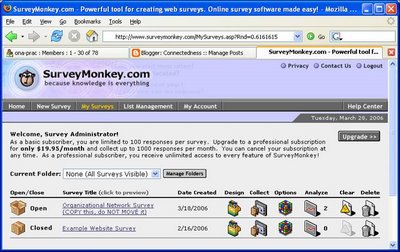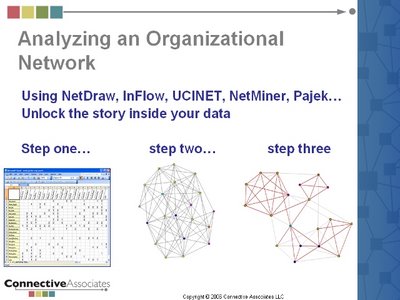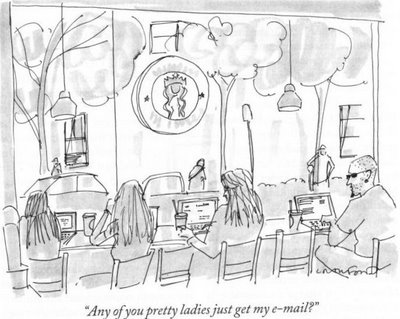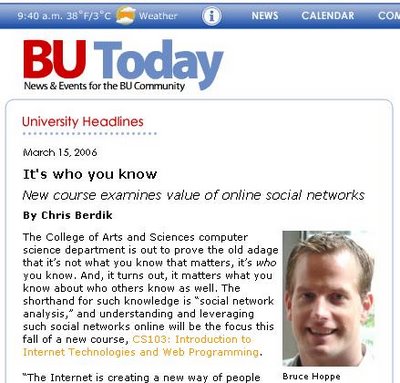A couple weeks ago I posted
social capital in one easy lesson, featuring my one-slide executive summary of the benefits of bridging and bonding. I invite you now to pause briefly and contemplate "Two Kinds of Networking":

There. Did you notice what just happened? Just by thinking about bridging vs. bonding, you increased your power to win resources, achieve impact, and increase profits.
If that seemed all too easy, then I refer you to "
Teaching Executives to See Social Capital" by
Ron Burt and
Don Ronchi. They describe how executives who took their two-week social capital business training course returned to their jobs and outperformed their untrained colleagues by a significant margin. (Note that we are measuring performance by tried and true metrics like salary history and job longevity, not obscure metrics like betweenness centrality.)
As Burt and Ronchi point out, their research shows that businesses can use the network perspective to improve performance even without investing in a single network survey or organizational map.
My favorite part of Burt and Ronchi's paper is their reference to the work of Janicik and
Larrick, who studied how well people learn "who knows whom" in an organization. It turns out we expect our friends to know each other, and we have a hard time remembering which of our friends don't know each other. In other words, we aren't very good at recognizing bridging opportunities (aka "structural holes"), and hence we miss out all the time on chances for innovation and profit.
The
good news from Janicik and Larrick is that people can learn to recognize structural holes. Surprisingly, even a little learning goes a long way in this regard. Just listening to conversation about structural holes can boost by 25% a person's ability to recognize them in real life. Now that is a conversation worth listening to!
You don't even have to wait for the conversation to happen. You can start it yourself. To make it easier for you, I have posted the above "Two Kinds of Networking" image as a
print-it-yourself business card. Just print the
PDF on Avery 8877 (or compatible) stock and you'll have social capital cards to help you and your colleagues make the most of your networking.
This work is licensed under a Creative Commons Attribution-ShareAlike 2.5 License and is copyrighted (c) 2006 by Connective Associates except where otherwise noted.
 Then I'll spend a bit of time on one of my favorite topics, network visualization, and encourage listeners to go beyond "plate of spaghetti" pictures and create images with story-telling power:
Then I'll spend a bit of time on one of my favorite topics, network visualization, and encourage listeners to go beyond "plate of spaghetti" pictures and create images with story-telling power: And we'll end with a rich discussion about what action to take after the organizational network analysis is done, and it's time to do something about it.
And we'll end with a rich discussion about what action to take after the organizational network analysis is done, and it's time to do something about it.








